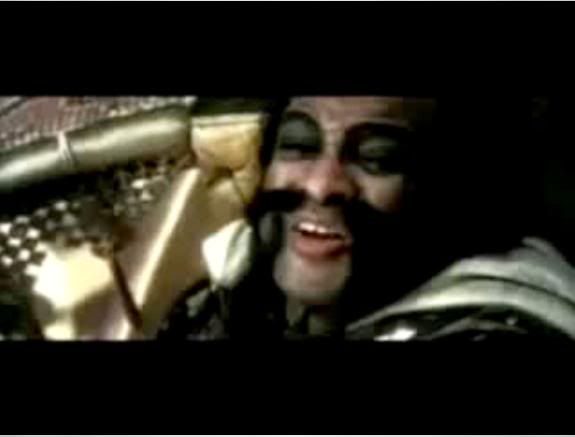Reflecting on 300 and Iranian Music
Today, I felt like we were opening a door, had stumbled into something important, felt like everything would change from here on out.
Sohale came in to play the violin and I was so impressed with his extensive knowledge of Persian music but then I started to feel a little sad too since I don’t know anything about Persian music. One parent, Faeze Woodville (such an incredibly intelligent and eloquent speaker!) said that to listen to Persian music, you have to learn the language just like you have to learn the language of film. But the musical language seems very complex, seems even more arcane and inaccessible to me than does the Farsi of Hafiz. Though that too is rather out of my reach. I was thinking these things when my student, Laila, spoke up in her assertive voice and said, “Yeah but as Marguerite [the journalist who visited our workshop on the second day] pointed out when she visited, going fresh into something can actually be really a good place to be too. You don’t have to know everything about Persian music in order to be able to appreciate it.” !!! She pointed to something Marguerite had said! Some learning has taken place. If nothing else, these youth have been AFFECTED!
Faeze told me that her son, 10 years old but really sharp for his age, told her in the morning – “I hope nothing happens today that makes us miss the workshop!” And I think that he was as happy to be here once he arrived as well. We watched the trailer of 300 and we had an amazing discussion around the trailer, a discussion that was able to capture the interests and intellects of everyone around the table, from our 10 year old to our mother.
First, we read an article about the film, 300, focusing on certain passages that talk about the representation of Persian peoples and the racism inherent in the film. Rather than groaning that we had to read, 10-year-old Thomas eagerly took to the task and helped us to read and analyze and understand what we were seeing. Then, when watching the trailer, I would stop the trailer every few seconds to ask questions about what we were seeing and again, nobody groaned. They were already accustomed to watching in this way, even Thomas! He was more interested in our discussion, I think, than in the trailer itself. And I think perhaps one reason might be that he has already likely seen the trailer several times so the novelty of watching something new is no longer that appealing and perhaps our conversation was more appealing since we were talking about the representation of the Spartans versus the Persians, something personally important to him as a young Persian man.
Throughout this engaging discussion, we landed on some fabulous insights! For example, Thomas noted that the Spartans were usually presented in a gold/green color palette while the Persians were presented in blue and black, to which Laila replied, “Yeah, gold and green are the colors of life and abundance. The color of wheat, of sustenance. While blue and black are the colors of bruises.” Later, Chelsea astutely asked, “Where are the women in this trailer?!” which opened up a brief discussion into the issue of what is being omitted from the media message. An incredibly fascinating connection we found was in connecting the picture of Ahmadenijad on the Newsweek cover we’d discussed a few days ago to a brief 2 or 3 second shot we saw in the 300 trailer. That was REALLY fascinating. As you can see below, the two images are nearly identical, and one is fictional and one is “non-fiction.”


So that was a really thrilling moment that made me feel like we are on the right track. That there are VERY real representational issues plaguing the Iranian community.
And that we need to talk about these issues, find them where they occur, share our findings with others, and continue to create as many new and more positive representations as we can.
Another interesting moment in our exploration of the 300 trailer came when we landed upon a shot-reverse-shot sequence showing a Spartan fighter speaking to a Persian fighter. The two characters are displayed below. By this point, we were readily able to notice that the Spartan appears much more attractive, is painted in lighter colors, is golden and appealing while the Persian is caricatured and made to look a bit demonic. And the Persian color palette appears a bit more like a bruise, less life affirming than the Spartans' colors. But what we did not immediately notice and that Faeze pointed out was that the camera angles are also working to convey a message. That is, for the Spartan, the camera is angled up, making him appear taller and imposing, while the Persian is shot with the camera looking down on him, making him look smaller, inferior, at the mercy of the Spartan.


After thoroughly interrogating the trailer, we then read the lyrics for the Yas (underground Persian rapper) song, “Hoviate Man” (My Identity), his response to the film “300”. We then watched a video with subtitles of the song. Afterwards, we made a list of the ways that Yas was re-representing Iran – what does he point to as important for us? What does he think has been left out of representations of Iranians, particularly in “300”? We discussed this a while and then Faeze asked a great question which was – why would Yas use rap music? The students had great answers – because hip hop and youth appeal to young audiences; because hip hop and rap are the voice of discontent among marginalized peoples; because hip hop is cool. But Faeze pointed out something that worked as a great segue into Sohale and Roshanak’s visits – that Yas represents something rarely talked about – the co-opting of Western culture by Iranians. In what ways do Iranians borrow from Western culture? In what ways do they hearken back to their traditional Persian past? What do they find most appealing about Western culture and how does that affect audiences and affect their message?
When Sohale came in, he touched upon these same issues, talking about how contemporary Iranian music borrows from the past and how he himself composes songs that borrow from many traditions. Then Roshanak was able to do the same in her discussion of the santoor. One thing that I regret about the musical expedition is that I was not really as present as I would have liked to be. I couldn’t be as attentive to the musicians and listen to what they were saying with enough focus as to be able to think as a teacher. I couldn’t really think of questions to ask the musicians so as to promote learning on my students’ parts, though that was what Faeze was so adept at – she was really able to engage the musicians in important conversations about the history of Persian music and how that history is appearing in current manifestations of music and how the West plays a role in that.
But I couldn’t do that because I was too busy trying to film the whole thing and then I was also waiting on lunch that Laura was picking up from our wonderful sponsor (S&H Kebab House on 5th and Passyunk) and I was also really concerned because another presentation was taking place in the other side of the gallery space at the Initiative and we had to draw all the curtains so I was constantly worried that we were being too loud and disrupting the presentations happening on the other side, even though Toni, the Programming Director of the Initiative was so kind and so accommodating to our group. She was even apologetic for the noise seeping into our space! So I was unnecessarily anxious but anxious nonetheless. Which ended up not mattering because Faeze was there with us and helped out so much and then also the music itself carried a great deal of the weight of the work. The students seemed mesmerized. I think that if I were to ever recreate such a lesson, I would try to ensure that there could be a production element involved. Perhaps the students could download audio tracks onto computers – some songs from traditional music and some beats from hip hop or something and then create a contemporary Iranian song after having listened to several and talked to musicians. That would be very interesting and engaging.
After the musical portion of the program, we read an interview with Frank Miller, the writer of the graphic novel, 300 and that was again on the Muslim Reverie site, in the same article we read at the beginning of class and menionted at the top of this reflection. Miller had some rather ignorant things to say about what he repeatedly referred to as “the enemy,” though he never defined who that enemy was and as the students found, he was conflating various stereotypes into one enemy that seemed to exist only in his head. For example, Miller says things like (again, all quotes are from an NPR interview wtih Frank Miller, portions of which are posted to the Muslim Reverie article linked to above):
"Well, I don’t really find myself worrying about the state of the union as I do the state of the home-front. It seems to me quite obvious that our country and the entire Western World is up against an existential foe that knows exactly what it wants … and we’re behaving like a collapsing empire. Mighty cultures are almost never conquered, they crumble from within. And frankly, I think that a lot of Americans are acting like spoiled brats because of everything that isn’t working out perfectly every time."
And:
" Well, okay, then let’s finally talk about the enemy. For some reason, nobody seems to be talking about who we’re up against, and the sixth century barbarism that they actually represent. These people saw people’s heads off. They enslave women, they genitally mutilate their daughters, they do not behave by any cultural norms that are sensible to us. I’m speaking into a microphone that never could have been a product of their culture, and I’m living in a city where three thousand of my neighbors were killed by thieves of airplanes they never could have built."
The students were able to discern here that Miller is obviously conflating his "enemies" in that female genetic mutilation has nothing to do wtih the Middle East and is not a Middle Eastern custom, so it has nothing to do with the same "enemy" of whom he seems so abhorrent.